Technology Exchange
Induction brazing of micro-channel aluminum flat tube
Abstract: This article proposes a high-frequency induction brazing method for the micro-channel used by new energy vehicles to cool the battery, and proposes the process flow and operation method for it, which improves the existing production process and solves the problem of micro-channel It is difficult to perform induction brazing.
Keywords: new energy vehicle, micro channel, induction brazing
1. Overview of micro-channel induction brazing
1.1 Overview of microchannels
The power energy used by new energy vehicles comes from the battery, and the on-board battery will generate heat when used continuously for a long time. Long-term heat will cause the battery energy storage to decrease and cause safety hazards. Therefore, in order to solve this problem, the micro-channel is designed. This structure is inserted into the gap of the battery module to cool the battery.
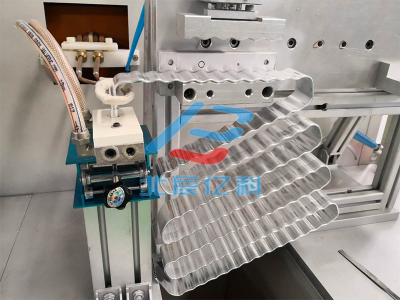 |
| Figure 1 Microchannel |
1.2 Overview of induction brazing
The welding seam is heated to the melting temperature of the alloy solder by electromagnetic induction heating method, but the metal being welded still has not reached the melting temperature at this time. The low melting point alloy adheres the two metals together through strong surface tension. Form a solid weld. The parts of the same or different materials can be welded together, the material saving effect is remarkable, and various needs can be met. Suitable for welding various magnetic materials such as steel, copper, aluminum, nickel, and special alloys. High-frequency induction local welding has high strength, no deformation, and comprehensive mechanical properties are better than other welding.
2. The overall frame of the induction brazing system
This design system is mainly composed of five parts: high-frequency power supply, extension, inductor, water-cooling structure, and accessories. The main extension is connected by cable, and the extension is fixed on the bearing mechanism.
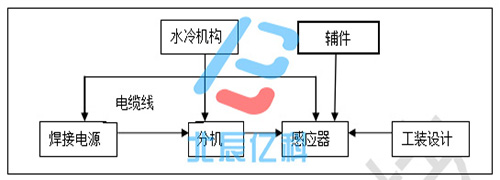 |
| Figure 2 The overall frame of the induction brazing system |
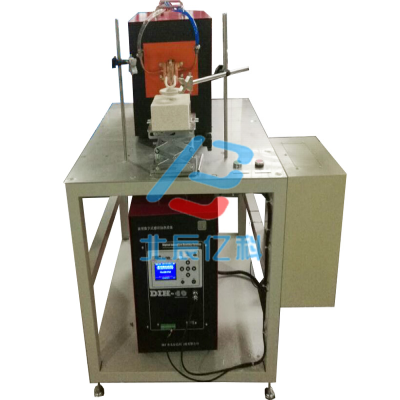 |
| Figure 3 The equivalent physical map of the system frame |
3. Process flow and selection
Welding power source
selection-sensor selection-solder additives selection-tooling
positioning design-auxiliary parts selection-welding parameters
determination-cleaning after welding.
3.1 Selection of welding power source
The wall thickness of the micro-channel water-cooled belt is only 0.3mm
and combined with the size of the joint, we finally chose the
all-digital W-DIH-40 model dedicated to micro-channel welding as the
welding power source.
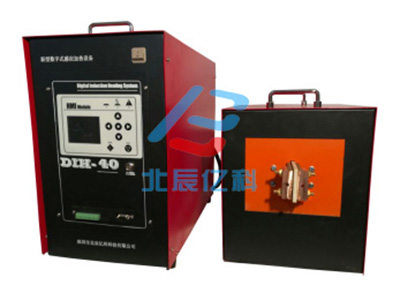 |
| Figure 4 W-DIH-40 welding power source (click here for product details) |
3.2 Sensor selection
Select the profiling sensor as its welding output terminal.
 |
| Figure 5 Sensor |
3.3 Selection of solder additives
The aluminum single tube pressure plate is determined to use flux-cored welding wire or self-brazing wire by our company's process department. Our company can provide solder additives process services, please inquire for details.
 |
| Figure 6 Solder |
3.4 Tooling positioning design
Induction heating welding is to place the welding part of the workpiece in an induction magnetic field for heating. The strength of the magnetic field in each part of the magnetic field is different, and there is a high requirement for the positioning repeatability of the workpiece. Therefore, it is necessary to design the corresponding tooling according to the specifications of each workpiece and the welding process at the same time. Our company can provide induction brazing tooling design services. Call us for details
3.5 Auxiliary selection
In high frequency induction welding, the induction heating power supply needs to be cooled, and an industrial chiller of corresponding specifications is required. When the customer uses the infrared mode and performs temperature monitoring in real time, a digital infrared thermometer needs to be installed. Our company's infrared temperature measurement When the instrument and the power supply work together, the temperature control accuracy can reach up to plus or minus 1 degree. Our company can provide chillers, high-frequency brazing customized infrared thermometers, please contact us for details.
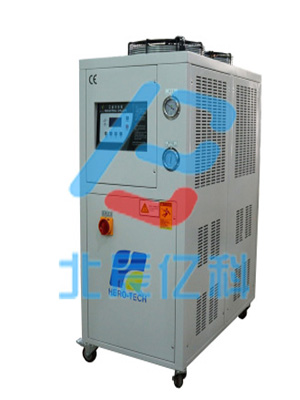 | 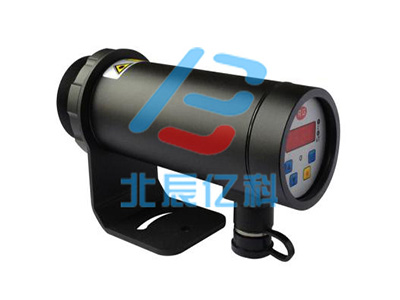 |
| Figure 7 Industrial chiller | Figure 8 Digital infrared thermometer |
3.6 Determination of welding parameters
After our long-term high-frequency brazing research and a lot of customer experience, we choose the automatic heating mode in this model. The heating current of the automatic heating mode is divided into five sections. In this process, the characteristics of aluminum metal increase with the temperature. High resistance increases, and the Joule effect causes the heating rate to increase during the heating process. This is inconsistent with the welding process summarized by our research. Therefore, we use a step-by-step current reduction method to heat the welding part. In this way, the temperature of the welding part can be increased under the premise of uniform heating, and the workpiece can be prevented from overburning in the high temperature section. Finally, in order to ensure the integrity of the welding process, we set a small current for heat preservation afterwards to ensure that it reaches the penetration standard and has no porosity. And other technological standards.
 | 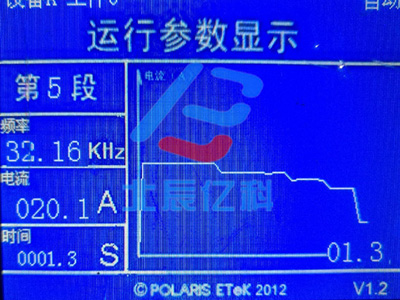 |
| Figure 9 Heating parameter setting | Figure 10 Display of operating parameters |
3.7 Cleaning after welding
Because of the use of special solders and additives, there are very few surface residues after micro-channel soldering, and only need to go through the water and brush with a fine-bristle brush to remove the floating residues on the surface.
4. Operation steps:
(1) Surface preparation: remove the oxide film and oil stains on the surface of the workpiece;
(2) Positioning of the workpiece: the workpiece is positioned, supported, and fixed to ensure that the relative position of the workpiece and the sensor remains unchanged during mass production, and the solder is made into a ring and added to the part to be welded;
(3) Heating process: Using the previously set parameters, the operator only needs to press the start button, and the equipment will automatically execute the previously set parameters to accurately weld the workpiece, and stop heating after the welding is completed;
(4) Post-brazing treatment: Because of the use of special solders and additives, there are very few surface residues after micro-channel welding, and only need to go through the water and use a fine-bristle brush to remove the floating residues on the surface;
5. Customer site pictures
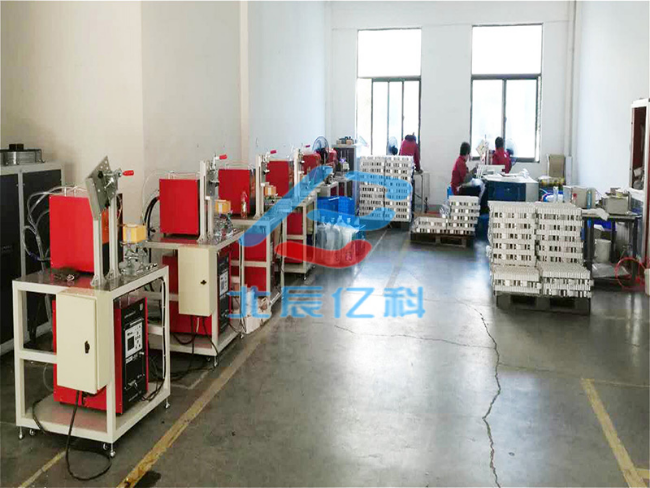 |
| Figure 11 Live picture |
6. Energy consumption comparison
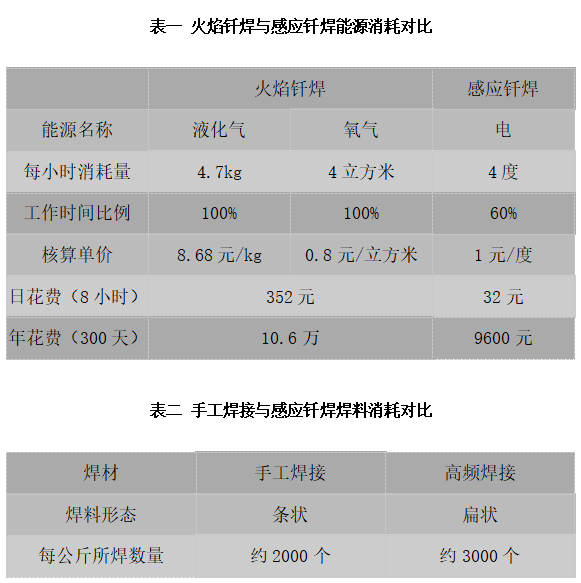
(1) The welding process is equipped to reduce the dependence on manual technology. Ordinary operators can replace the certified flame welders, which reduces the burden of safety and annual certification of the company.
(2) In the case of small workpieces and fewer pipelines, the advantage of induction brazing is not obvious. However, in the induction brazing welding process, the equipment is automatically welded without manual operation, and the welding time can be used to operate another equipment, so that one person can operate two welding machines at the same time. This can further improve product quality.
(3) According to the data in the above figure, an induction brazing equipment can save 10.6-9600=100,000 yuan per year.
7. Summary
This article describes the four aspects of micro-channel high-frequency induction brazing technology, process flow, operation method, and energy consumption comparison in the air-conditioning pipeline of new energy vehicles. The wall thickness of aluminum metal, especially in the micro-channel water-cooled belt, is only 0.3 In the case of mm, it is difficult to high-frequency induction welding. A solution based on all-digital induction heating technology, covering all links before welding, during welding, and after welding, is proposed. And given detailed and effective data to prove that high-frequency induction brazing is superior to flame brazing in terms of environmental protection, energy consumption, and welding material consumption.


 Scan and follow!
Scan and follow!